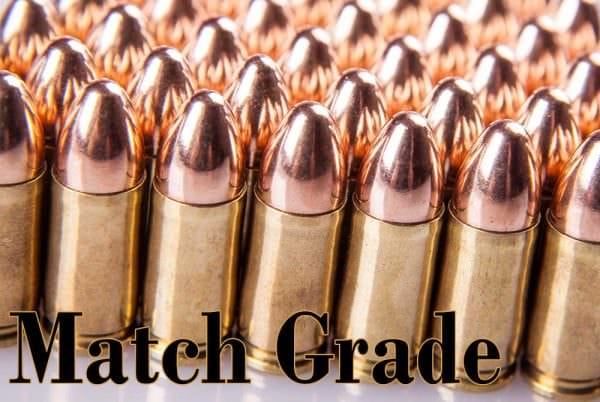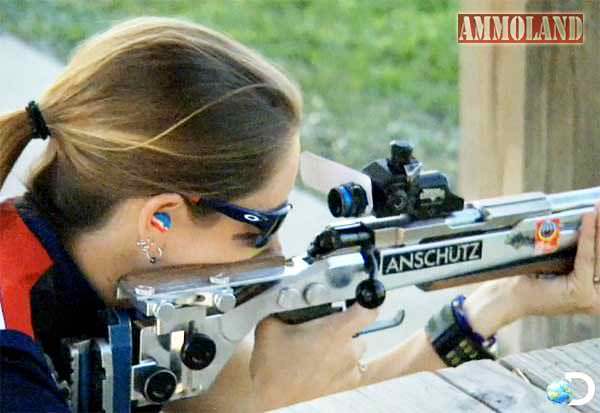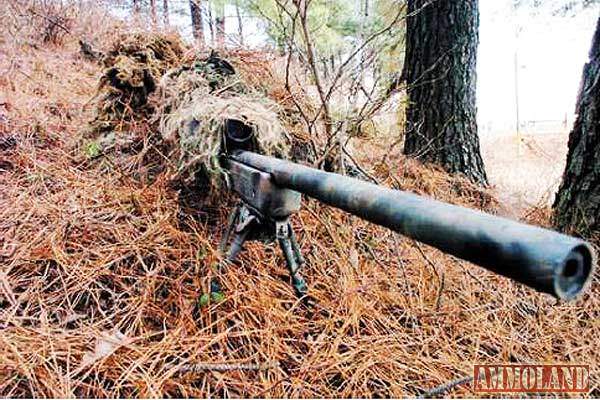by Sam Hoober
Match grade ammunition, match grade rifles? Alien Gear Holsters’ Sam Hoober debunks the phrase “match grade,” does the term have any useful meaning left?


USA – -(Ammoland.com)- The term “match grade” does get used a fair amount when it comes to both firearms, components and ammunition. Does it actually mean anything, or for that matter, does it mean anything anymore?
It’s something to wonder about prior to spending money on anything labeled “match grade,” be it a target rifle, hunting rifle, or concealed carry gun you intend to put in a gun holster.
What The Dictionary Says About Match Grade
According to the Wiki guys, “match grade” firearms, components or match grade ammunition is/are firearms, components and ammunition machined with far greater precision than typical guns, components or ammunition is. (Such ammunition would ostensibly be hand-turned brass or at least very well could be.) As a result, anything match grade would have much tighter tolerances and would be far more accurate than the typical gun you get in your LGS (local gun shop).
Match grade products are made for the purposes of competitive shooting matches. Since the utmost of accuracy is needed, a gun, it’s components and ammunition have to be up to higher standards. Naturally, this would also extend to military and police snipers as lives depend on their shots being made.
It’s kind of like race-spec equipment on a motor vehicle. Formula 1 cars, for instance, have such tight tolerances that the engine is actually seized at room temperature; they have to warm them up by other means (pumping hot water around the engine compartment) before starting them.
Some hold the match grade definition goes further, and that there are actual tolerance specifications for barrels, ammunition and so on, though it depends on whom you ask. (It isn’t as if the Office of Weights and Measures maintains standards on what constitutes “match grade.”)

For instance, Shilen Rifles specifies that the bore of their match grade barrels cannot vary more than .0005″ over the entire length of the barrel. Another company, Lilja, specifies no more than 0.0001″ variation is acceptable for their standard stainless steel match-grade barrels.
Ammunition manufacturers likewise have different standards; some may find one batch is a bit more accurate than others. They label it “match” and call it good. Others have a whole other process. In some instances, the brass, propellant and primer may be the same but a better projectile is used, in some cases it’s the propellant and projectile and in others still it’s precision-machined round made with the best materials from the ground up.
As a result, it can be safely said that while tighter tolerances (and perhaps better materials) are involved, the exact specifications of what makes something match grade varies, depending on whom is making it.
Is It Worth The Match Grade Premium?
With that all said, is it worth paying the match-grade premium? In truth…it depends.
Granted, some people just like to have premium products. A lot of people out there are perfectly content to put a S&W Shield in their concealed carry holster, but some people want to have a Wilson Combat, Chip McCormick or Les Baer pistol instead.
Consider what the firearm, component or ammunition is for. If you’re competing in shooting matches (whether pistol or long rifle) then it makes sense because many of these events require far more accuracy than the standard rifle or pistol is inherently capable of to score well. You need equipment that will help you win. After all, you don’t run a draft horse in the Kentucky Derby.
For the amateur long range or bullseye shooter that wants the utmost in precision shooting and doesn’t mind spending, it might also be worth it for the same reasons.
Likewise, a military or police sniper needs the same for their profession. Lives depend on placing accurate shots and doing so at possibly great distances.
However, for some other applications, paying the premium may not be necessary, strictly speaking. The typical big game hunter or concealed carrier will likely have all their needs met with a standard quality firearm. What you find in the average gun store is likely going to be just fine for these purposes, so long as either is reasonably accurate and reliable.

About Sam Hoober
Sam Hoober is a contributing editor at Alien Gear Holsters, as well as for Bigfoot Gun Belts. He also writes weekly columns for Daily Caller and USA Carry.
